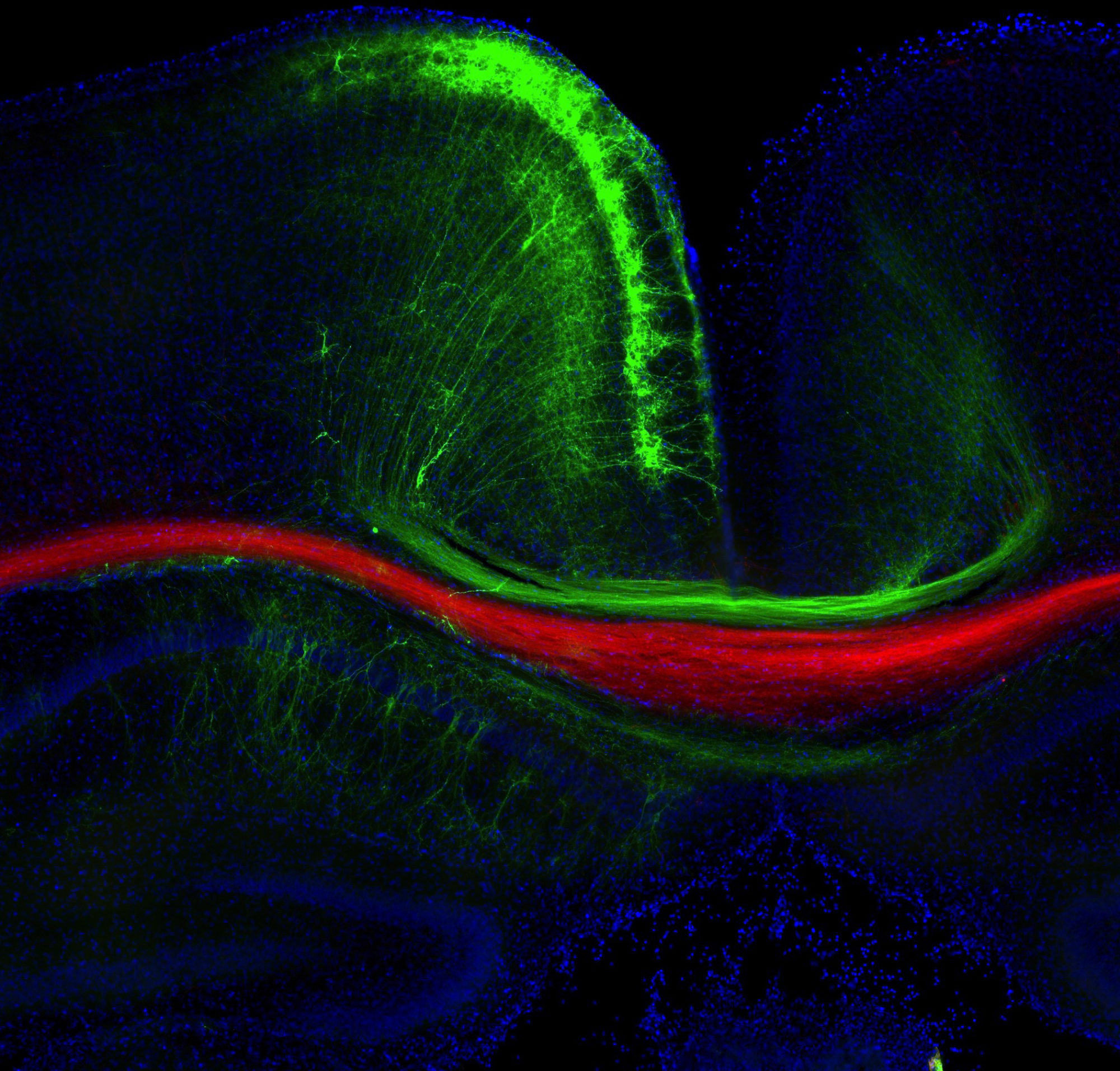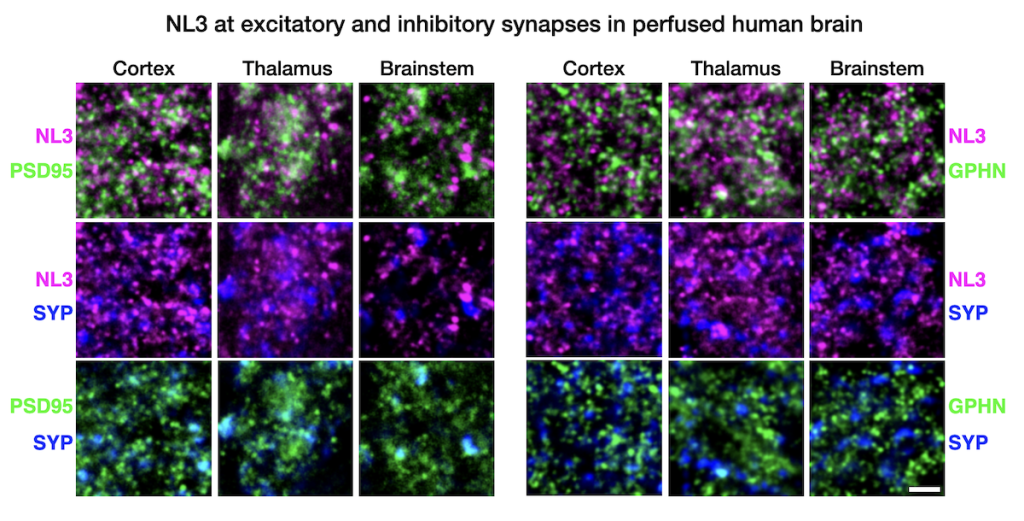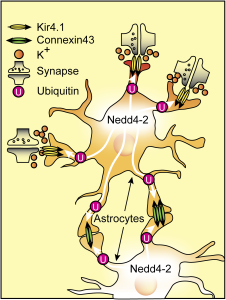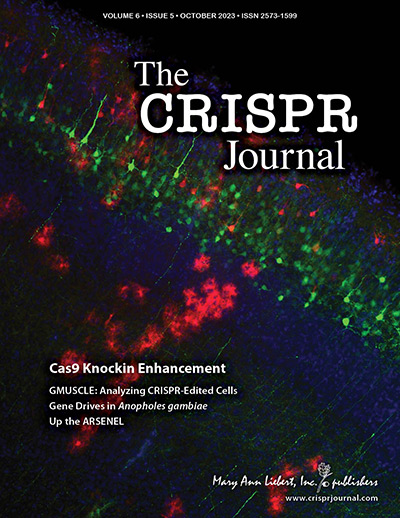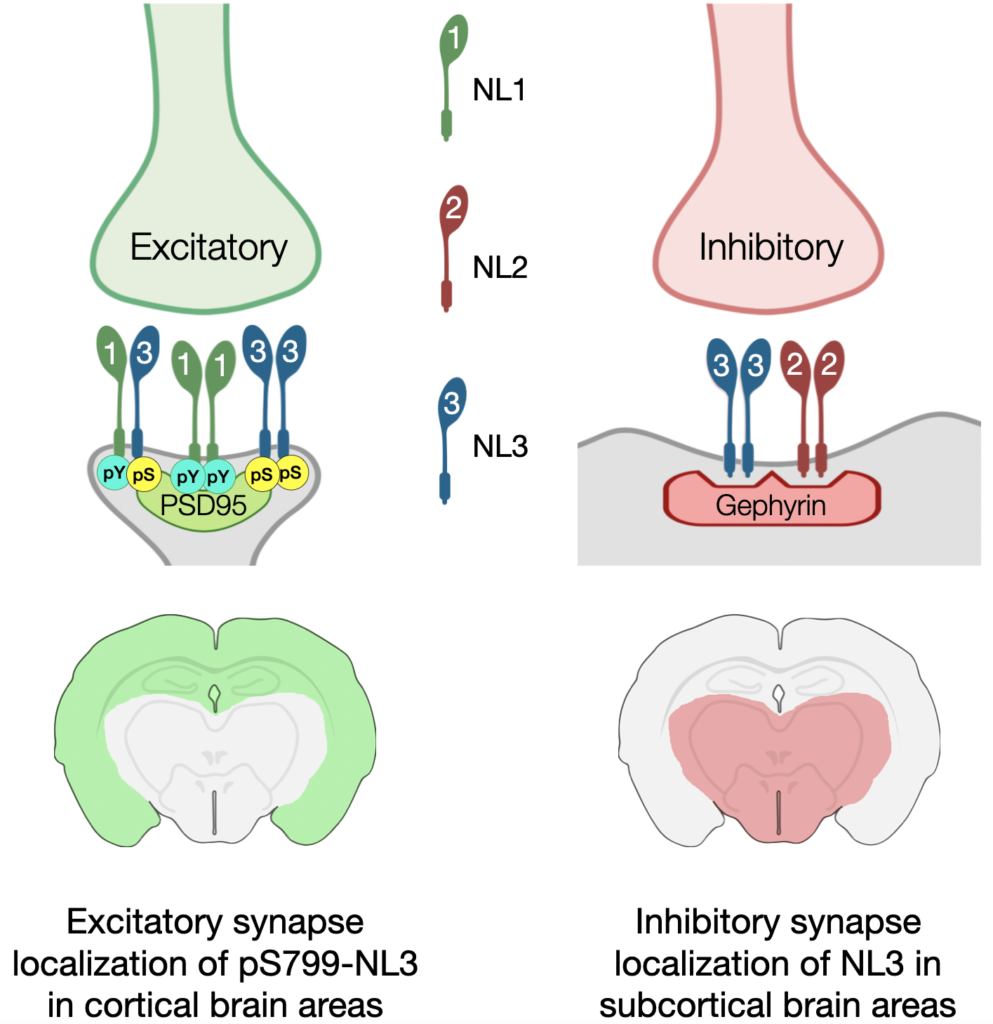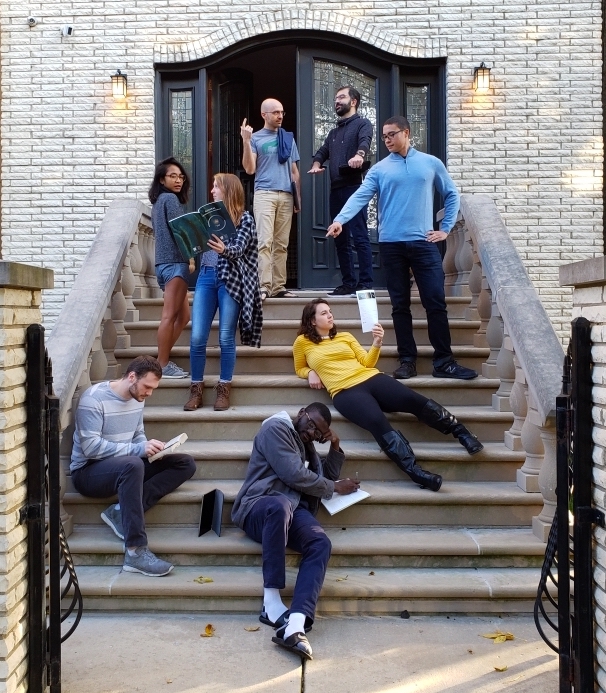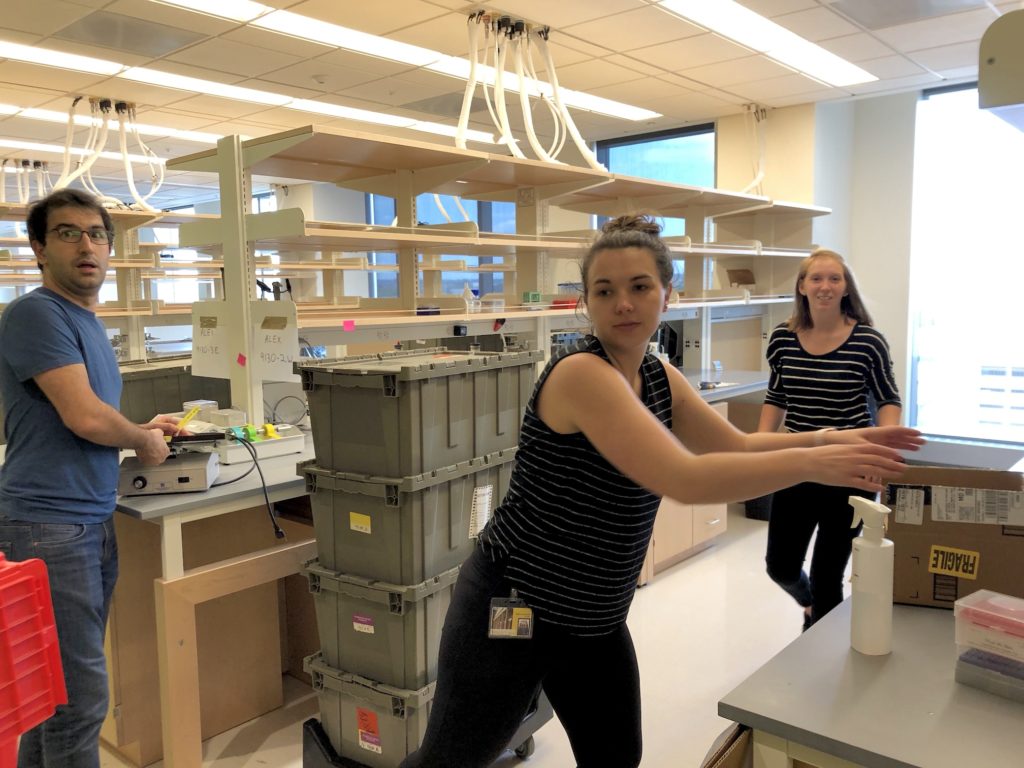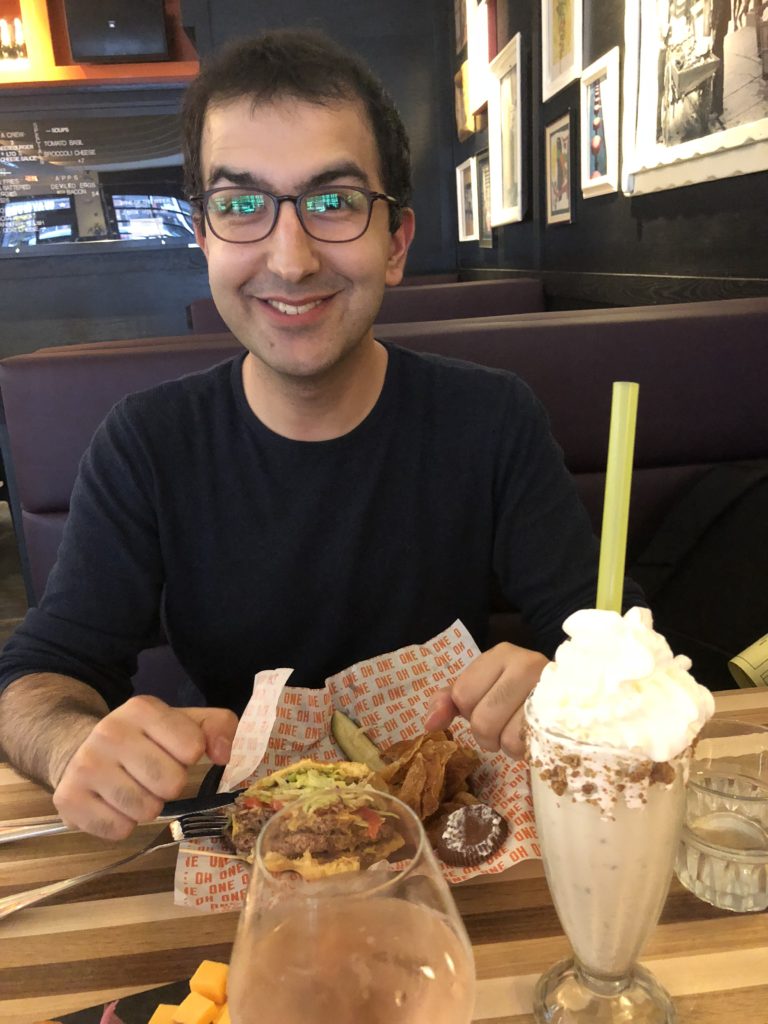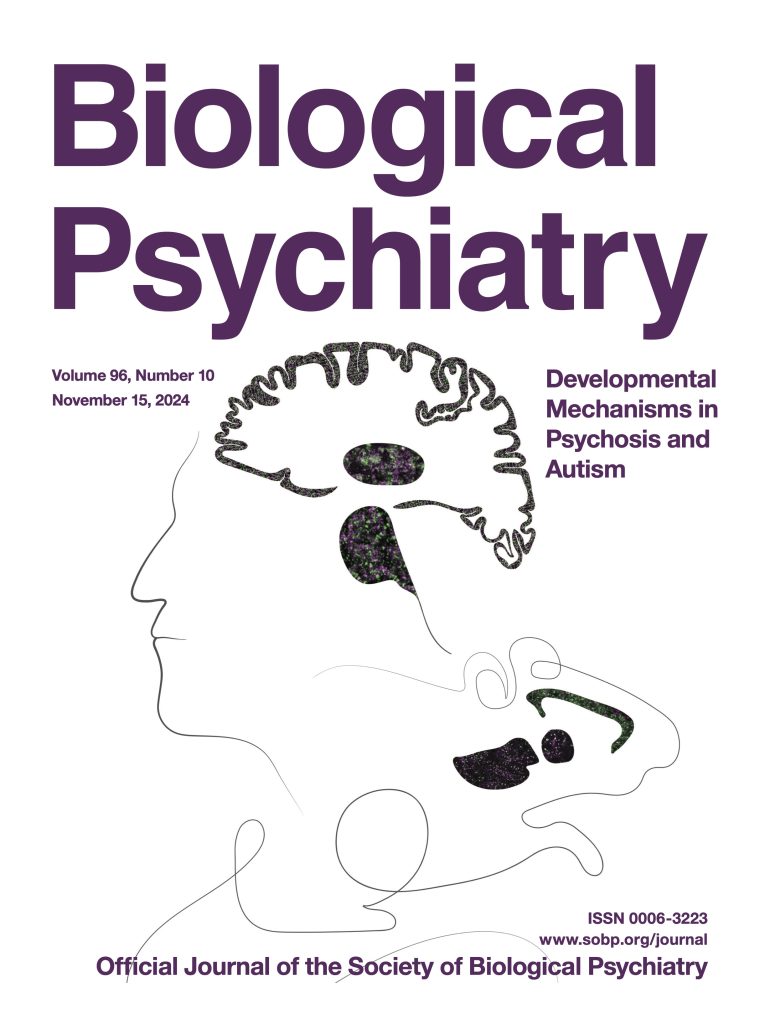
Congrats to Bek Altas and other lab members, as well as our collaborators at the Max Planck Institute for Multidisciplinary Sciences and the University of Turin. Our paper on the synaptic localization of Neuroligin-3 in the mouse and human brain and the molecular mechanism that regulates it, became the cover article on this month’s issue of Biological Psychiatry! Congrats to Cheryl Brandenburg for the cover art and the epic experiment that inspired it, one of the first ever immunolabelings of excitatory and inhibitory synapses in the human brain!
